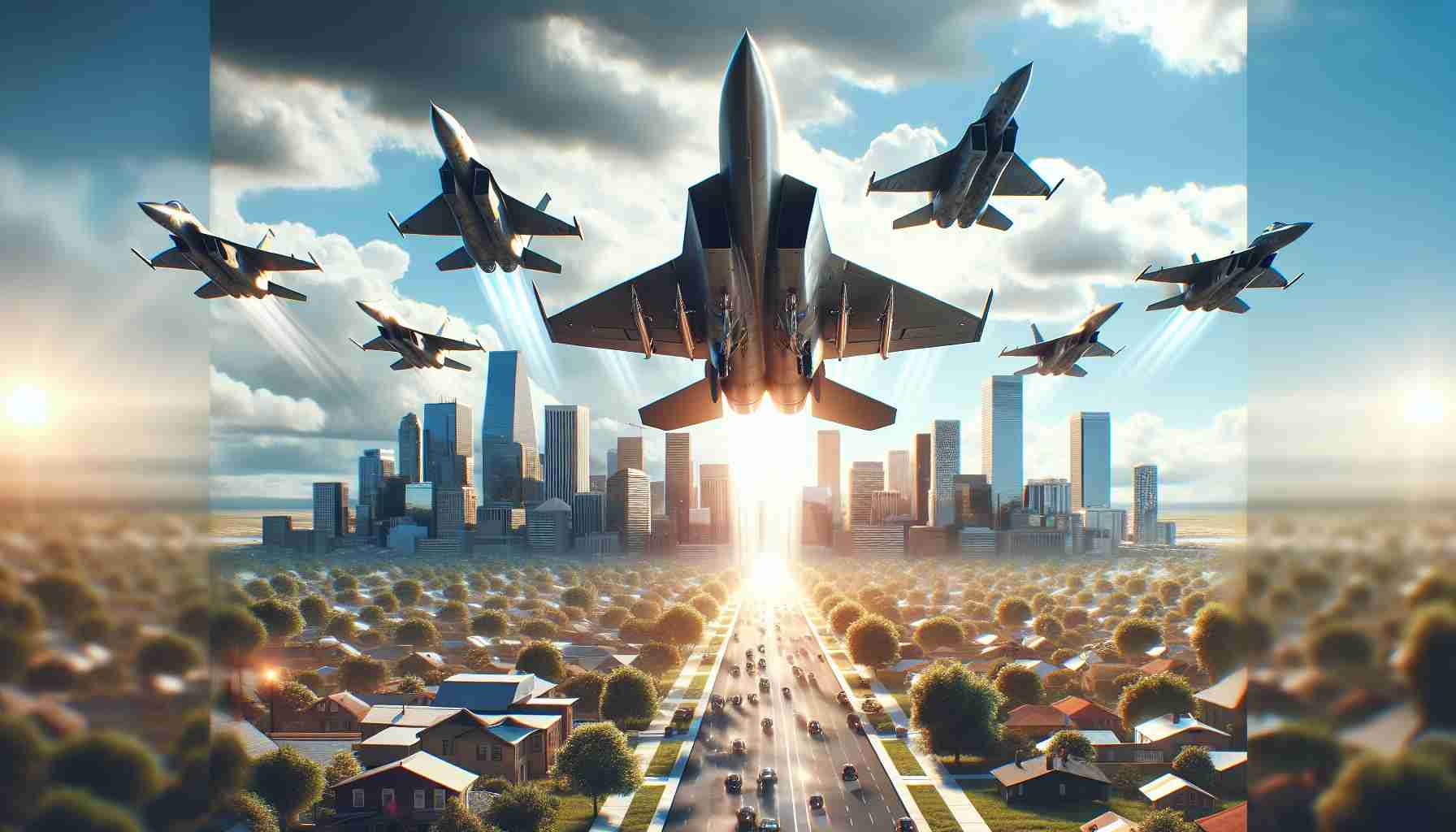The competition among nations has spurred remarkable advancements in military aviation, leading to the creation of highly sophisticated combat aircraft. Among these, two notable contenders are the Russian SU-57 and the American F-35, both of which represent the pinnacle of engineering in their respective designs. This article aims to examine the contrasting philosophies and capabilities of these aircraft, providing insight into their roles within the modern military landscape.
Design Philosophy and Mission Orientation
The SU-57, developed by Sukhoi, is a fifth-generation multi-role stealth fighter tailored primarily for achieving air superiority and executing ground attack missions. Its design emphasizes super maneuverability, enabling it to perform complex aerial maneuvers that can outwit adversaries during dogfights. The aircraft is equipped with advanced avionics and sensors, complemented by a powerful engine that enhances its agility.
Conversely, the F-35 Lightning II, designed by Lockheed Martin, focuses on versatility and multi-mission capability. This family of stealth aircraft comes in three variants: the F-35A for conventional takeoff and landing, the F-35B for short takeoff and vertical landing, and the F-35C designed for carrier operations. The F-35’s primary mission revolves around serving as a networked asset that collects and disseminates data across multiple platforms, which significantly improves battlefield situational awareness.
Stealth Capabilities
Both the SU-57 and F-35 incorporate advanced stealth technologies, yet their strategies diverge. The F-35 is specifically engineered for stealth, featuring a design that minimizes its radar cross-section and utilizes materials that absorb radar waves. This design makes it exceptionally difficult to detect, allowing it to penetrate heavily defended airspace for intelligence, surveillance, and reconnaissance (ISR) missions.
In contrast, while the SU-57 does include stealth characteristics, it emphasizes maneuverability and speed. Its design features faceted surfaces intended to deflect radar waves; however, the aircraft’s larger size relative to the F-35 can compromise its stealth capabilities under certain conditions. The SU-57’s focus remains on engaging enemy fighters with agility and firepower rather than solely relying on stealth.
Avionics and Systems
When examining avionics, the F-35 boasts the AN/APG-81 AESA radar, renowned for its high resolution and long-range detection capabilities. The aircraft features a sophisticated sensor fusion system that processes vast amounts of information, providing pilots with a comprehensive operational picture.
The SU-57 utilizes the Sh121 avionics system, which includes radar systems and sensors that offer similar situational awareness. Nevertheless, even though the SU-57 excels in electronic warfare capabilities, reports suggest that it does not achieve the same level of sensor integration and data sharing as the F-35.
Performance and Maneuverability
In terms of performance, the SU-57 is powered by two engines that provide supercruise capability at high speeds without afterburners. Its thrust vectoring nozzles allow for exceptional maneuverability, making it a formidable opponent in air combat scenarios.
On the other hand, the F-35, with its single engine, offers commendable performance but may not match the SU-57’s agility in dogfights. However, advantages lie in the F-35’s advanced tactics and situational awareness, which are crucial in modern combat environments.
Conclusion: Divergent Paths to Air Superiority
In conclusion, both the SU-57 and F-35 encapsulate the cutting edge of military aviation technology but serve different strategic needs. The SU-57 prioritizes raw performance and maneuverability, excelling in aerial engagements, while the F-35 emphasizes stealth, versatility, and a networked approach to warfare. Ultimately, their effectiveness hinges on the specific mission requirements and tasks assigned to them within their respective air forces. As technology continues to evolve and new threats emerge, the dynamic between these two aircraft and their capabilities will undoubtedly develop further.
Insights and Fascinating Facts About Modern Military Aviation
Understanding the technological advancements and strategic philosophies behind fighters like the SU-57 and F-35 enhances our appreciation of these engineering marvels. Here are some intriguing insights and facts about contemporary military aircraft that you might find interesting:
1. Burnishing Your Aviation Knowledge: Stay informed about the latest developments by subscribing to aviation magazines or following reputable online platforms such as Defense One. Regular reading keeps you updated on new technologies, aircraft deployments, and mission outcomes.
2. Experience through Simulation: Dive into the excitement of piloting combat aircraft through flight simulation video games. Titles such as Microsoft Flight Simulator or DCS World provide realistic flying mechanics, allowing players to operate various aircraft, including modern military fighters.
3. Museum and Air Show Visits: Explore aviation museums or air shows in your area to see these fighters up close. Many museums offer full-scale replicas or preserved aircraft like the F-35 and SU-57, providing in-depth historical contexts and specifications.
Interesting Facts about Military Aircraft
– Network-Centric Warfare: The F-35 is notable for its network capabilities, able to share real-time data with other aircraft and ground forces, creating a “Connected Battlefield” that enhances mission efficiency through improved situational awareness.
– Super Maneuverability: The thrust vectoring technology of the SU-57 allows it to execute extreme maneuvers, enabling performance such as flat spins and high-speed turns. This capability greatly influences air combat dynamics.
– Evolution of Stealth Technology: Though both aircraft utilize stealth, the F-35’s design principles draw lessons from the development of the F-22. Improvements in radar-absorbing materials and airframe designs have shaped modern stealth strategies.
Tips for Aspiring Aviation Enthusiasts
1. Enroll in Online Courses: Consider signing up for online courses focusing on aeronautics or military history. Websites like Coursera or edX offer various courses that provide insights into the technical and strategic aspects of military aviation.
2. Join Aviation Forums: Engage with communities on platforms like Reddit or specialized aviation forums to connect with fellow enthusiasts. Sharing knowledge, discussing aircraft features, and staying informed on the latest trends in military aviation technology can enrich your understanding.
3. Watch Documentaries and Read Books: Explore documentaries or literature on aviation history and military strategy. Recommendations include titles like “Fighter Combat: Tactics and Maneuvering,” along with documentaries focusing on the production and deployment of the F-35 and SU-57.
Final Thoughts: The Ever-Evolving World of Military Aviation
Gaining insight into modern military aircraft such as the SU-57 and F-35 requires both technical knowledge and awareness of the broader strategic landscape. As these aircraft continue to evolve, they will play critical roles in shaping the future of aerial warfare.
Enhancing Your Understanding of Modern Military Aviation
Military aviation is a fascinating field that blends cutting-edge technology with strategic military operations. As we explore the capabilities of aircraft like the Russian SU-57 and the American F-35, there are numerous tips, life hacks, and interesting facts that can enrich your appreciation and knowledge of this dynamic landscape. Here’s how you can dive deeper into the world of military aviation.
Stay Informed with Reliable Resources
To keep up with the rapid advancements in military aviation technology, it’s vital to follow credible sources and publications. Consider subscribing to military and aviation magazines such as Air Forces Monthly or Defense News for the latest articles, interviews, and expert analyses related to modern aircraft. This can enhance your understanding of technical specifications and strategic uses of aircraft.
Utilize Simulation to Experience Flight
For a more hands-on approach, flight simulators provide a realistic taste of piloting modern military aircraft. Games such as DCS World and Microsoft Flight Simulator offer players a chance to simulate various scenarios using advanced aircraft. These tools not only entertain but also educate users about the operational dynamics of modern militaries.
Engage with Community and History
Visiting local aviation museums or air shows can greatly enrich your understanding. Engaging with history helps contextualize the evolution of military aviation. To see aircraft like the SU-57 and F-35 in person, check for events at aviation museums, which often showcase a variety of military aircraft.
Expand Your Knowledge with Online Learning
Enhance your understanding further by enrolling in online courses related to military aviation and aeronautics. Platforms such as Coursera offer a plethora of courses that provide insights into aircraft design, historical developments, and strategic military planning.
Network with Fellow Enthusiasts
Joining online forums or communities dedicated to aviation can be invaluable. Sites like Reddit’s Aviation community or specialized aviation message boards allow enthusiasts to share experiences, discuss features, and stay updated on trends in military technology.
Documentaries and Literature
Don’t overlook the wealth of information available through documentaries and books. Watching films that focus on the strategic deployment and technological advancements of military aircraft can provide a deeper understanding. Titles like “Fighter Combat: Tactics and Maneuvering” are worthwhile reads for those looking to expand their knowledge.
Interesting Facts to Share
– Network-Centric Warfare: Significant advancements have been made in networked warfare, with the F-35 enabling unique real-time communication capabilities across platforms, enhancing tactical efficiency in the field.
– Advanced Maneuvers: The SU-57’s super maneuverability allows it to perform astounding aerial feats, such as sharp turns and high-speed transitions, which can drastically impact traditional dogfighting tactics.
– Stealth Evolution: Both the SU-57 and F-35 represent the latest developments in stealth technology, applying innovations in radar-absorbing materials and design principles to minimize detection during missions.
Final Reflections
In the ever-evolving realm of military aviation, understanding unique aircraft like the SU-57 and F-35 enhances our appreciation for their complex designs and strategic roles. By staying engaged through various channels, from reading to participating in simulators and community discussions, you not only bolster your knowledge but also become a part of a global conversation surrounding military advancements. As technology progresses, so too will our approach and understanding of air combat, ensuring that the intrigue and relevance of military aviation continue to captivate enthusiasts worldwide.






















